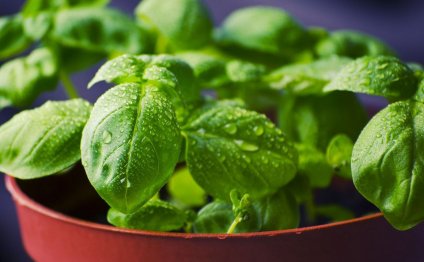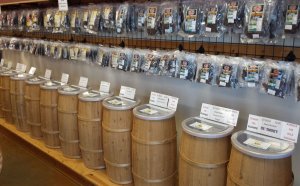
What spices go with Beef?
What Spices Choose Exactly What Ingredients?
The next flavor and food combinations, adjusted from information provided by the nationwide Heart, Lung and Blood Institute ( possess included good thing about making meat, poultry, fish and veggies tasty without adding salt. For meat, fish and poultry, take to a number of of those combinations:
The total amount to include differs using sort of spruce or natural herb, form of recipe and personal choice.
If at all possible, focus on a tested dish from a reliable resource. If you're creating your very own meal,
start out with attempting one or two seasoning.
Substituting Comparable Levels Of Different Forms. Let's say your dish calls for fresh natural herbs and
all you've got are dried out natural herbs? Below are a few estimated levels of different forms of herbs
equivalent to each other:
1 tablespoon finely slashed fresh natural herbs
1 tsp dried out leafy herbs
1/4 to 1/2 tsp ground dried herbs
General Rules for Amounts. Unless you know-how a lot of a spice or herb to make use of, follow these
tips from SpiceAdvice ® at make sure to make use of
more natural herbs if making use of a leafy or fresh kind:
Begin with 1/4 tsp of most ground spices or surface dried out natural herbs for these quantities and adjust as needed:
1 lb of beef;
1 pint (2 cups of soup or sauce).
Focus on 1/8 tsp for cayenne pepper and garlic dust; adjust as needed.
Red pepper intensifies in flavor during cooking; include tiny increments.
When You Should Include
The type of spice or herb and also the form of food that its used influence the full time to include it
during food preparation in most cases, include fresh herbs close to the end of the cooking time as
extended heating may cause taste and aroma losings For uncooked meals, add herbs and natural herbs
several hours before providing to allow tastes to mix. Note: eliminate entire spices and bay leaves
at the conclusion of preparing; secure all of them in a tea baseball for easy elimination.
Keeping Herbs and Herbs
Air, light, dampness as well as heat rate flavor and shade lack of herbs and spices. Follow these tips
to simply help preserve their particular high quality:
Tips
Follow these pointers that will help you use herbs and herbs whenever flavor and quality are best:
typically, hold:
1 year for herbs or ground spices;
a couple of years for whole herbs.
Buy a smaller container and soon you decide how quickly you will make use of a specific herb or spice.
To test freshness:
If it smells powerful and flavorful, it is probably however potent.
To smell entire herbs, particularly peppercorns and cinnamon sticks, break or break all of them to release their particular aroma.
Preliminary high quality will influence rack life. Label day of buy on container with a permanent tagging pen.
4 Tablespoons Mustard Dust
1 Tablespoon Garlic Powder
4 Tablespoons Onion Powder
2 Tablespoons White Pepper
1 Tablespoon Thyme
1 Tablespoon Basil
4 Tablespoons Paprika
Combine spices together and blend well. Place handful of uncooked rice when you look at the base
of each and every shaker to permit spruce to mix and flow quickly. Use funnel and fill shakers with spruce
combination. For extended storage, address shaker holes with tape and label. Creates about one cup.
1 Tablespoon garlic powder
1 teaspoon ground basil
1 1/2 teaspoon ground black colored pepper
dash of cayenne
1 1/2 teaspoon onion powder
1 tsp surface parsley
1 tsp dried sage
| If you are
cooking: |
Decide to try flavoring it with: |
| Beef: | Bay-leaf, marjoram, nutmeg, onion, pepper, sage, thyme |
| Lamb | Curry dust, garlic, rosemary, mint |
| Chicken | Garlic, onion, sage, pepper, oregano |
| Veal | Bay-leaf, curry powder, ginger, marjoram, oregano |
| Chicken | Ginger, marjoram, oregano, paprika, poultry seasoning, rosemary, sage, tarragon, thyme |
| Fish | Curry dust, dill, dry mustard, marjoram, paprika, pepper |
| Carrots | Cinnamon, cloves, dill, ginger, marjoram, nutmeg, rosemary, sage |
| Corn | Cumin, curry dust, onion, paprika, parsley |
| Green Beans | Dill, curry dust, marjoram, oregano, tarragon, thyme |
| Vegetables | Onion, pepper |
| Potates | Dill, garlic, onion, paprika, parsley, sage |
| Summertime Squash | Cloves, curry powder, marjoram, nutmeg, rosemary, sage |
| Winter Squash | Cinnamon, ginger, nutmeg, onion |
| Tomatoes | Basil, bay leaf, dill, marjoram, onion, oregano, parsley, pepper |
| Cucumbers | chives, dill, garlic, vinegar |
| Peas | green pepper, mint, fresh mushrooms, onion, parsley |
| Rice | chives, green pepper, onion, paprika, parsley |
Share this Post
Related posts
Reference Book
Whom received? what questions to ask a guy how much marketing manager make how many working days in a month? who developed…
Read MoreWhat is interesting about Texas
The second largest state in the US, Texas - the Lone Star State - has a wealth of natural assets and cultural attractions…
Read More










